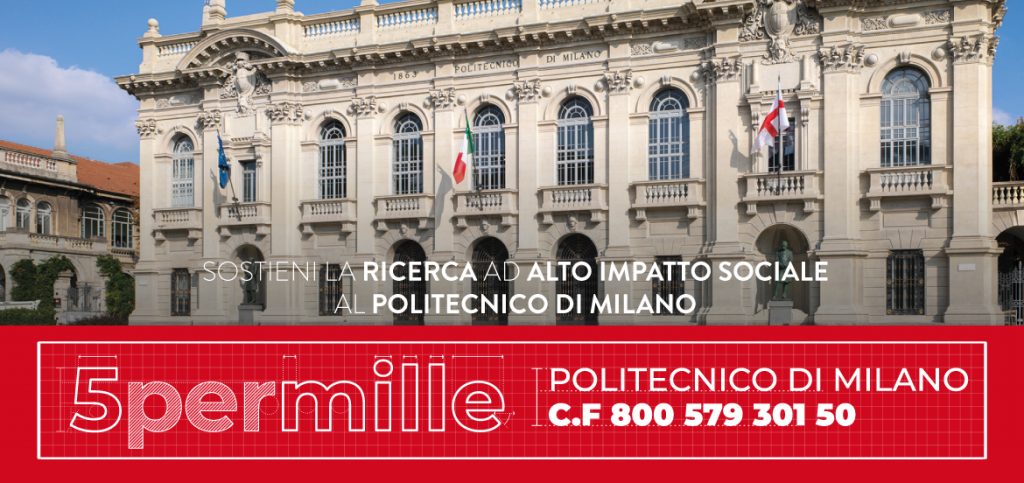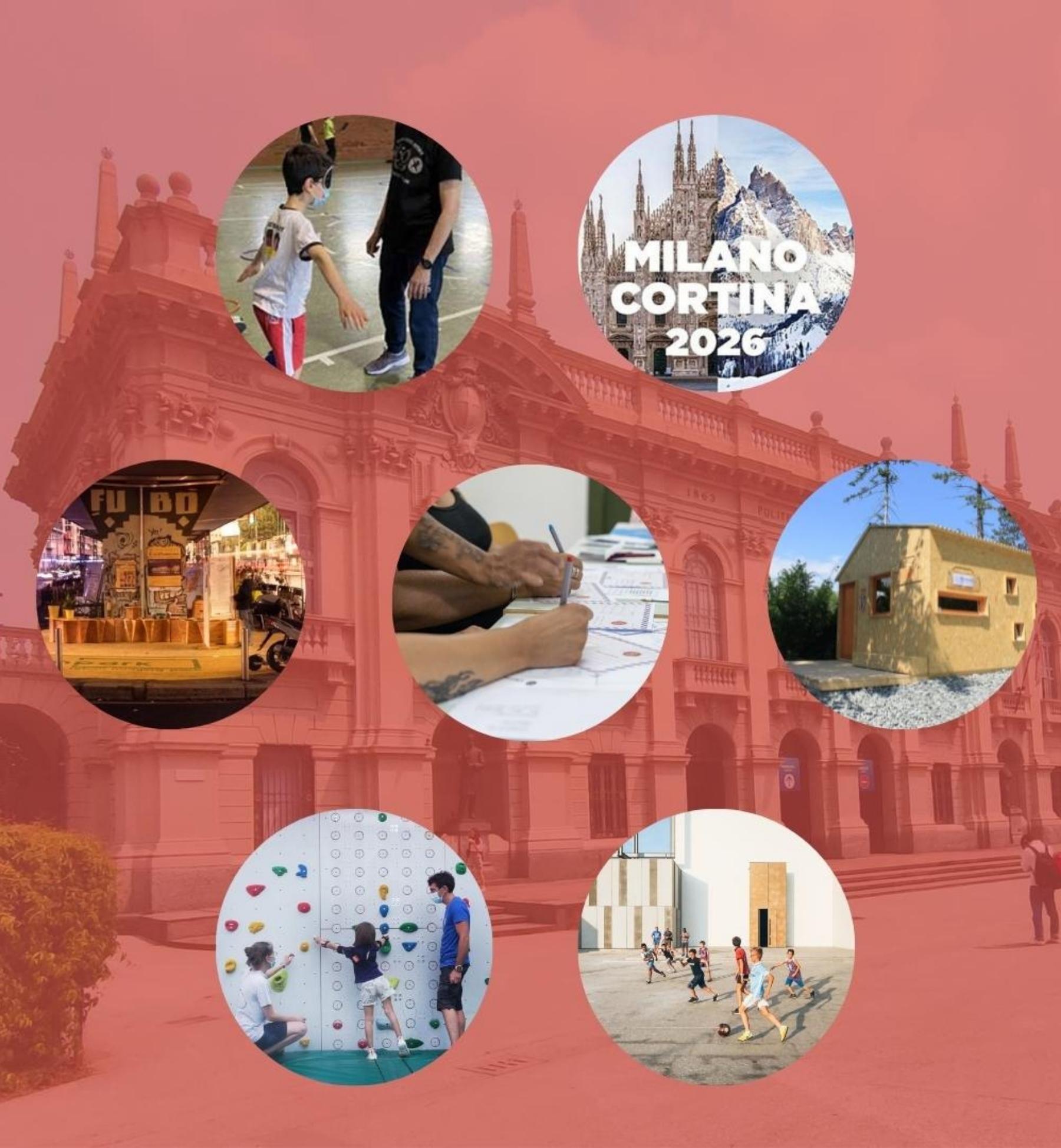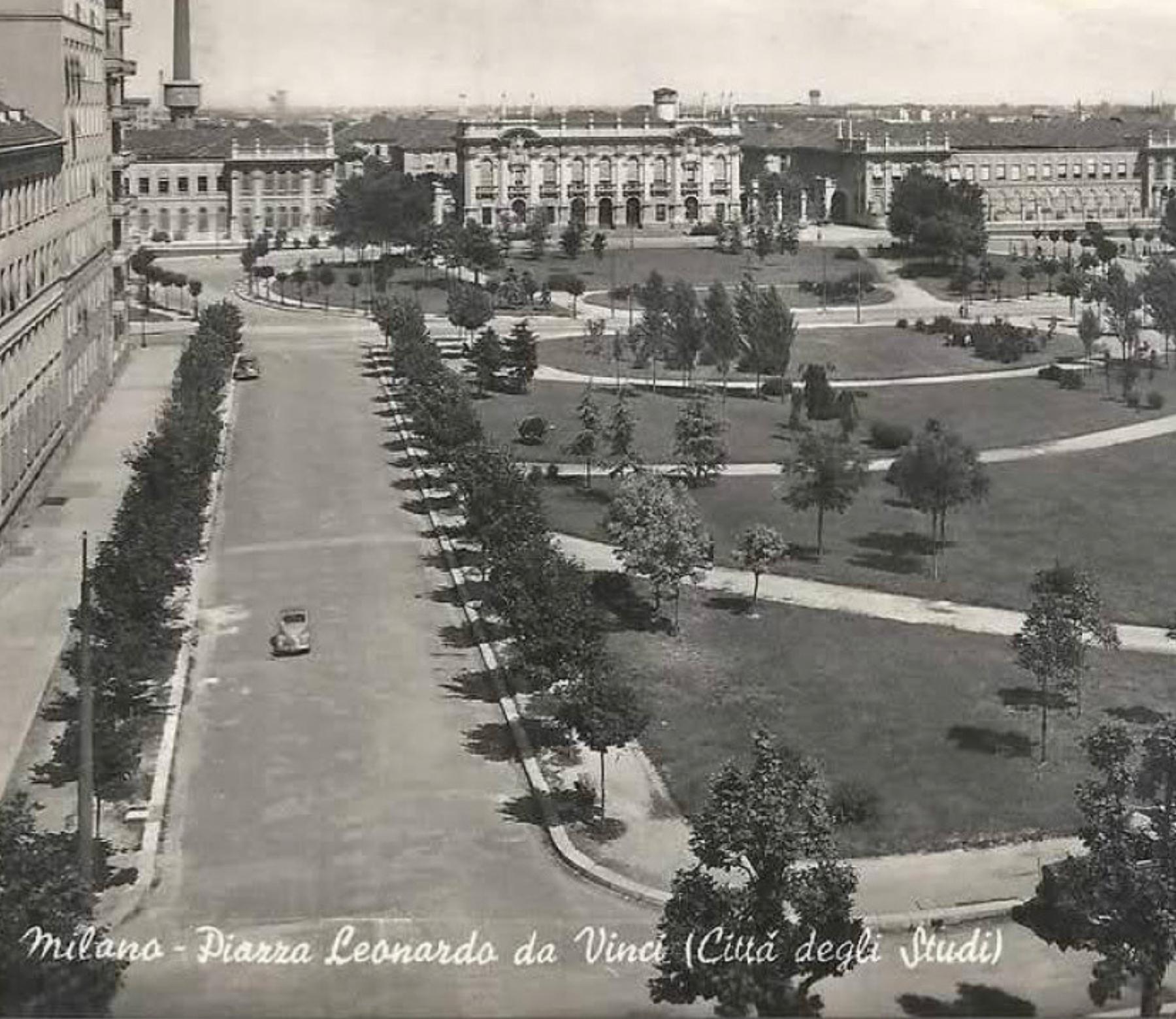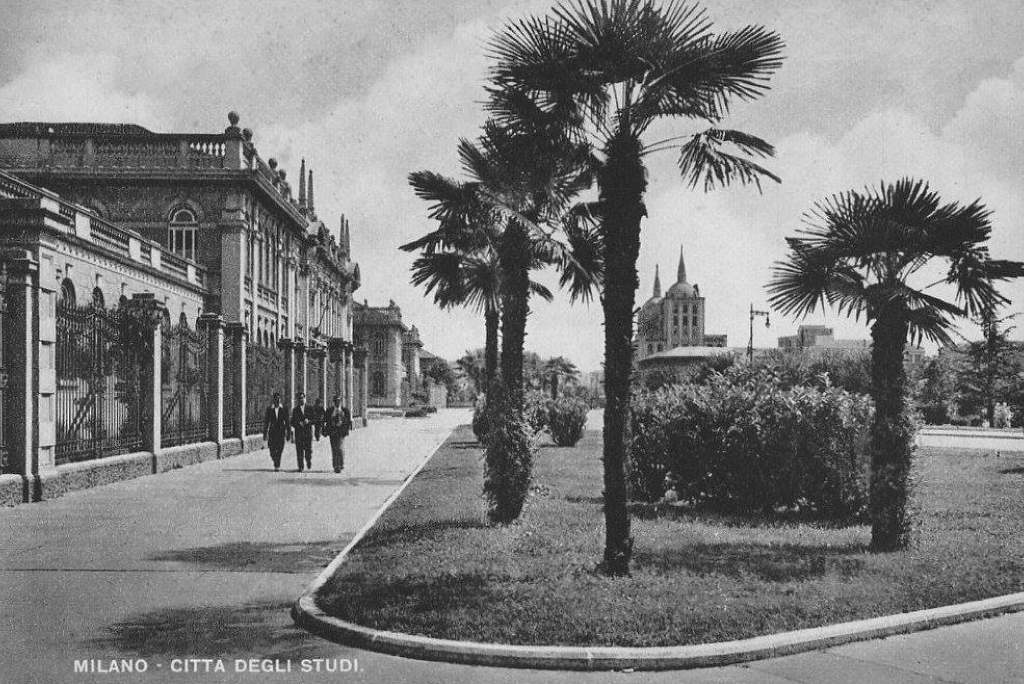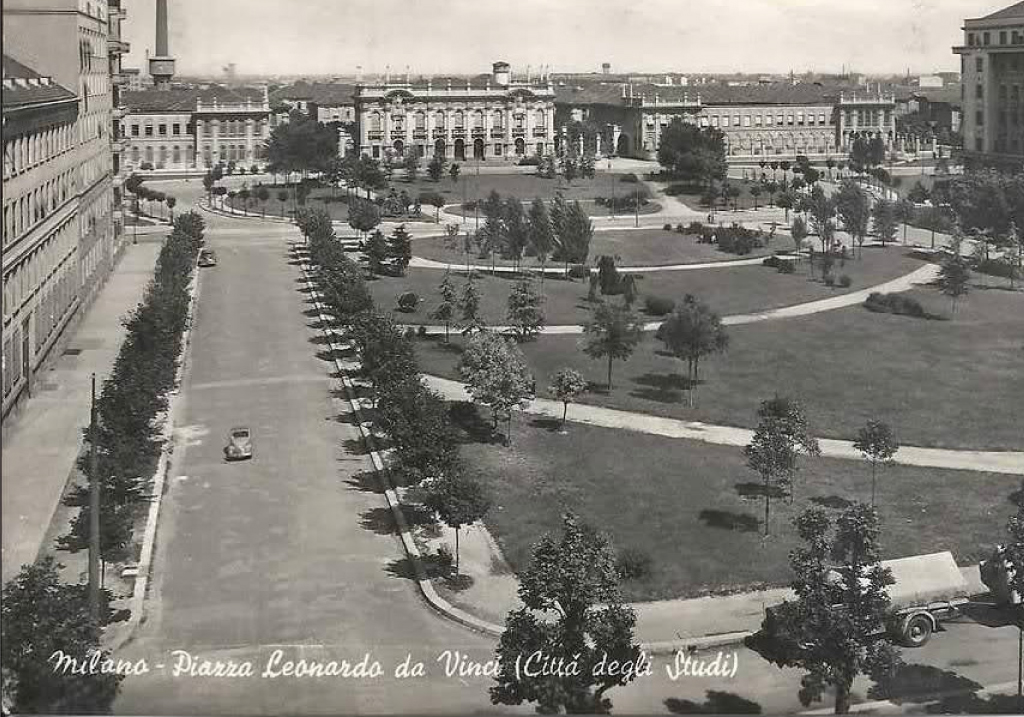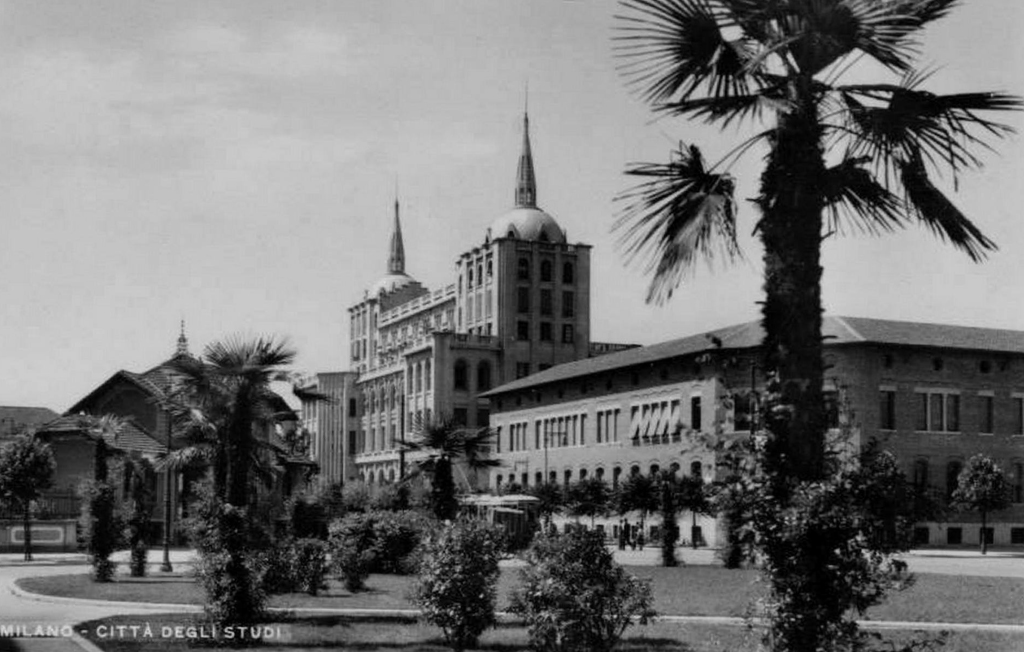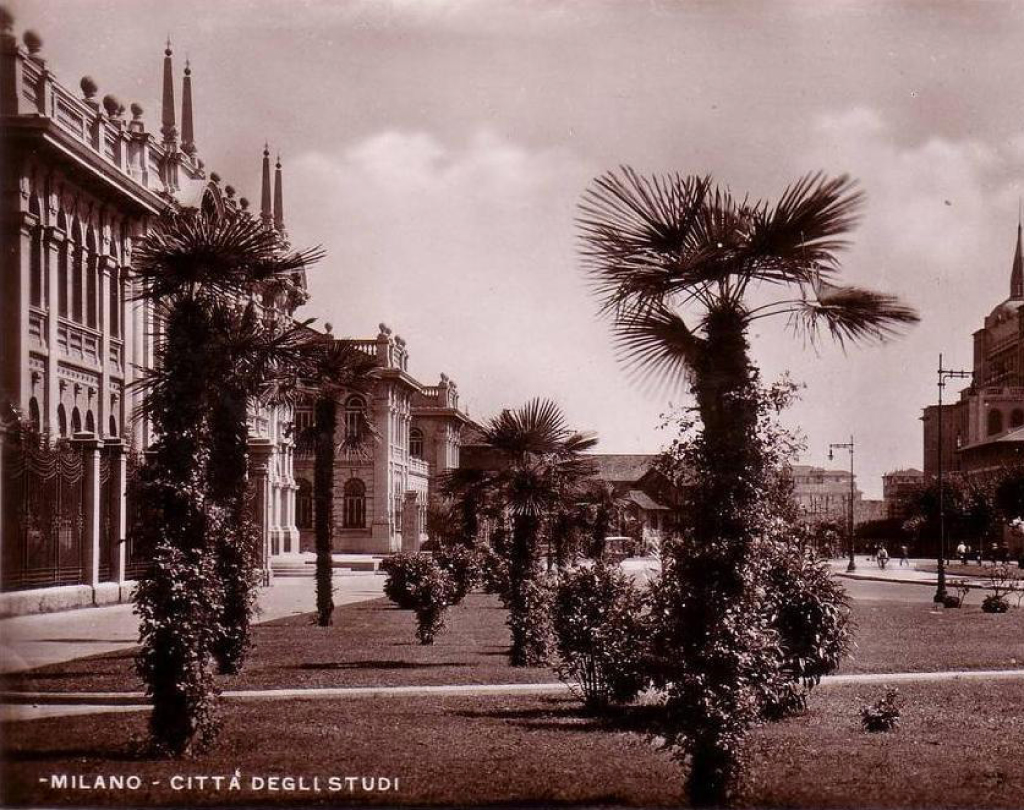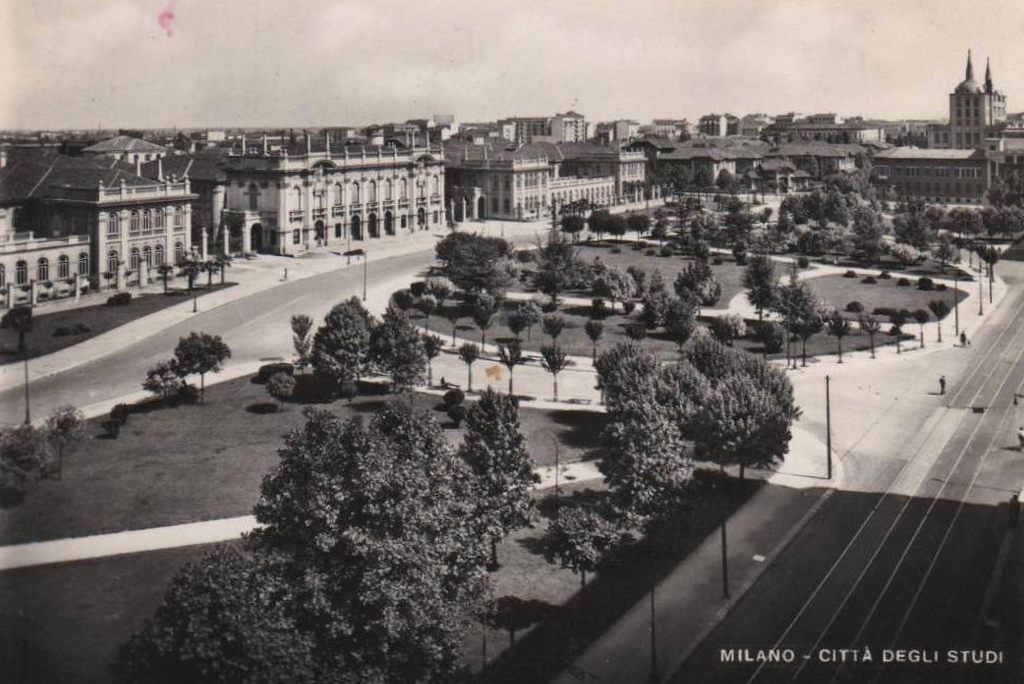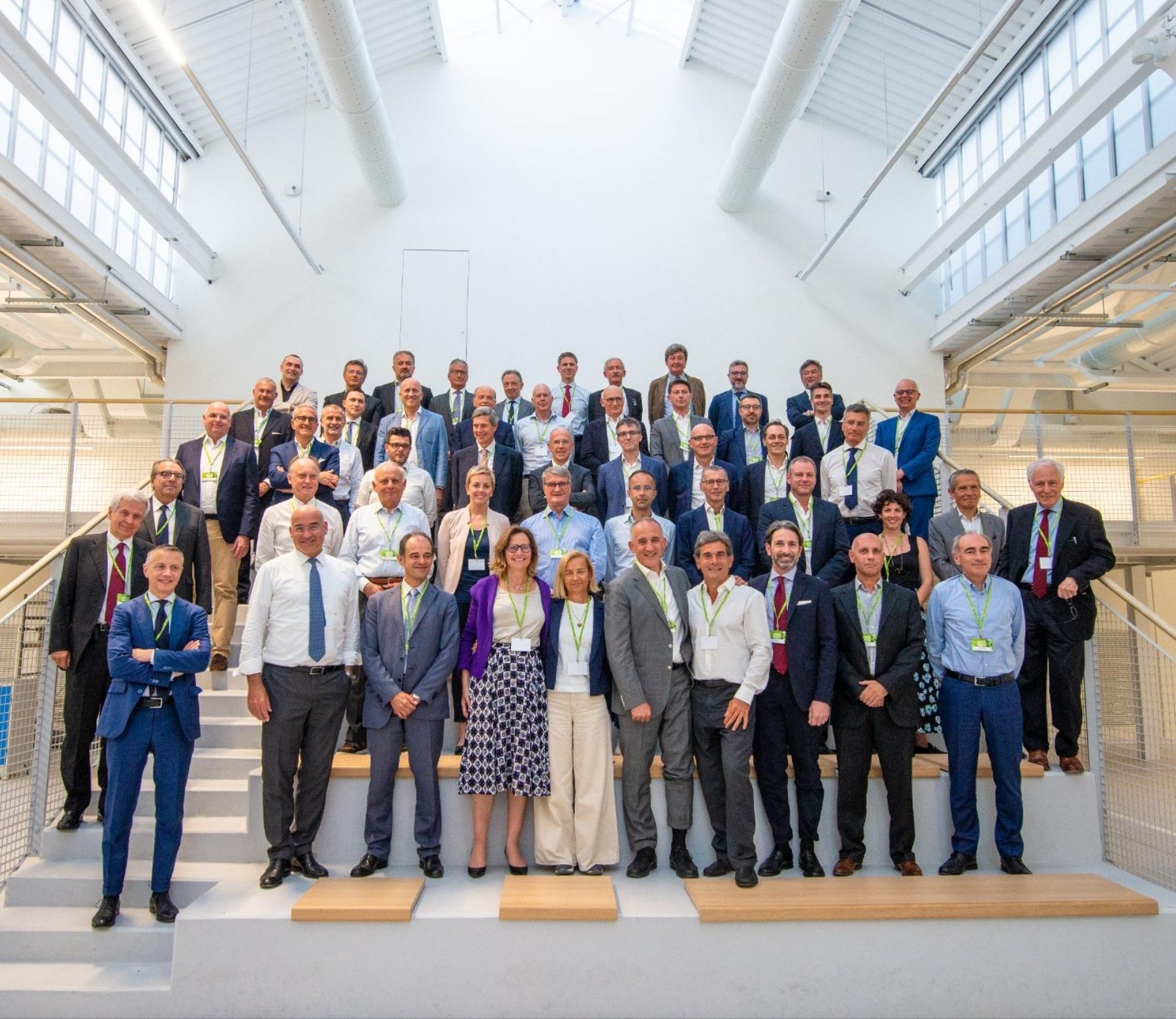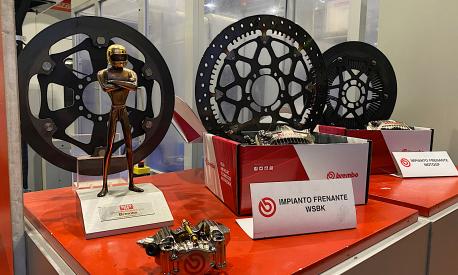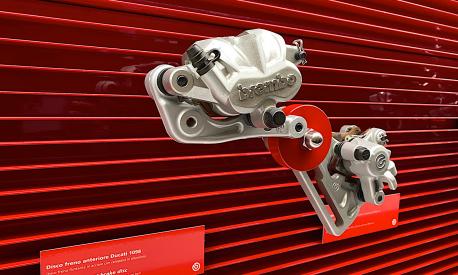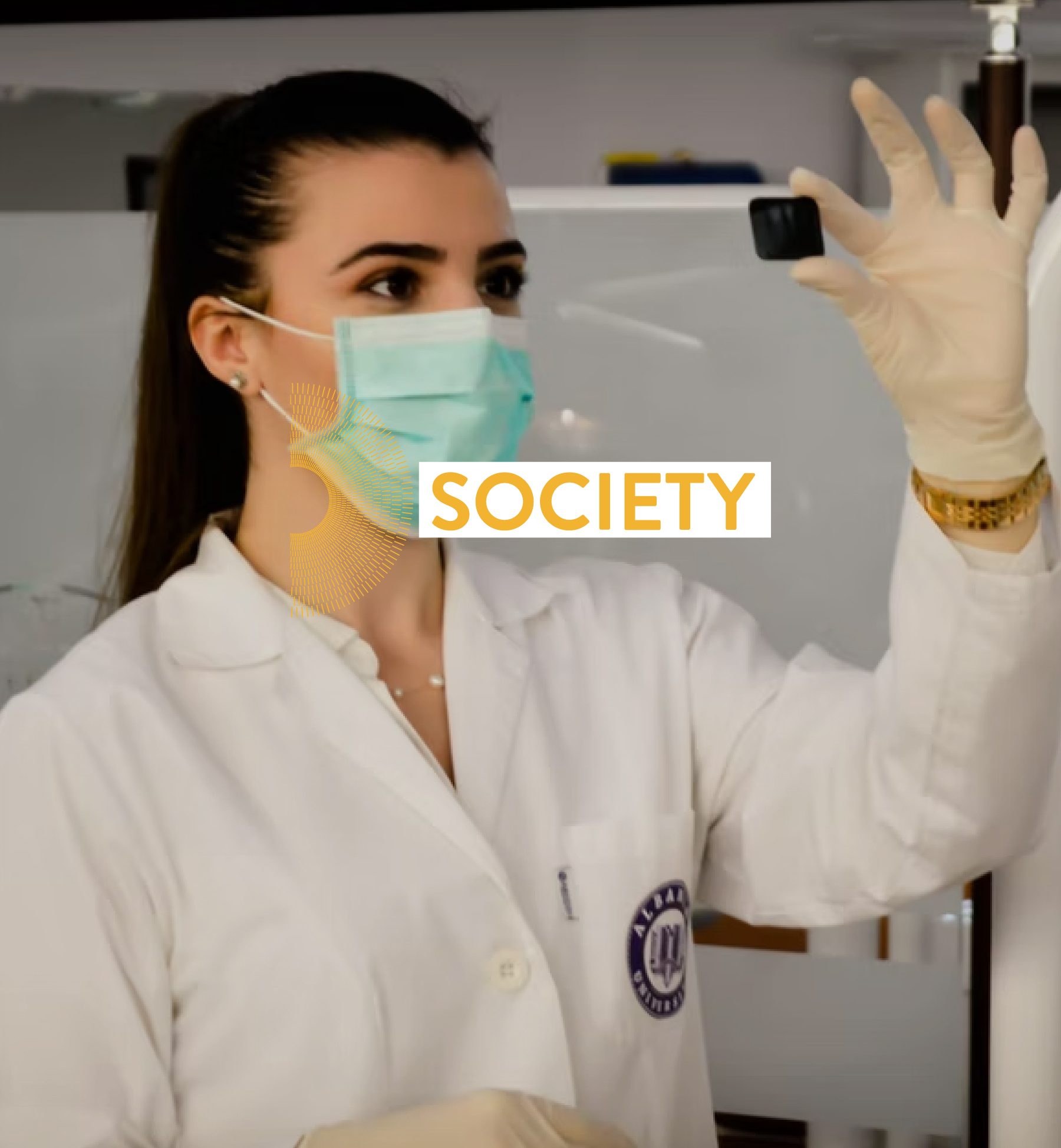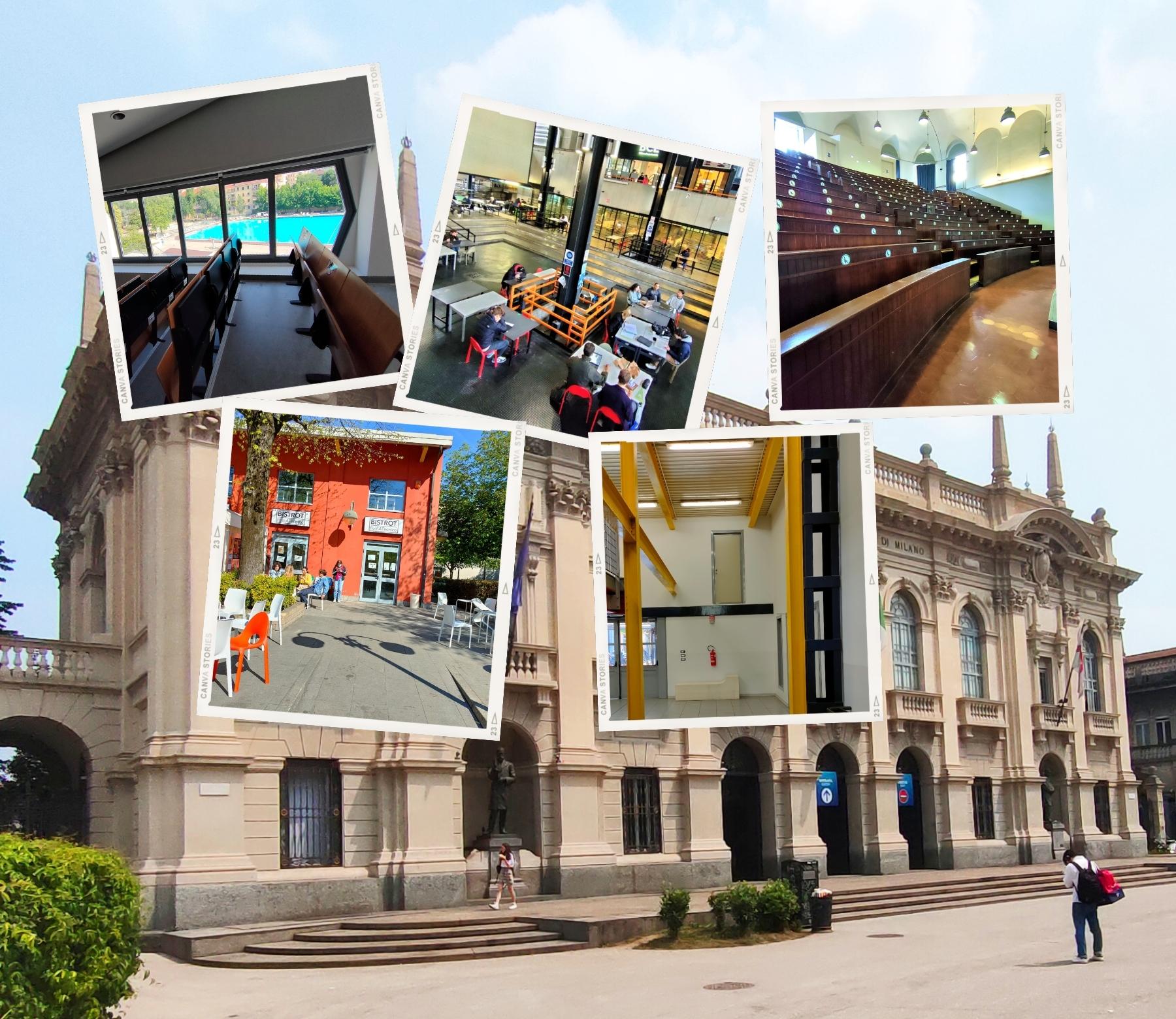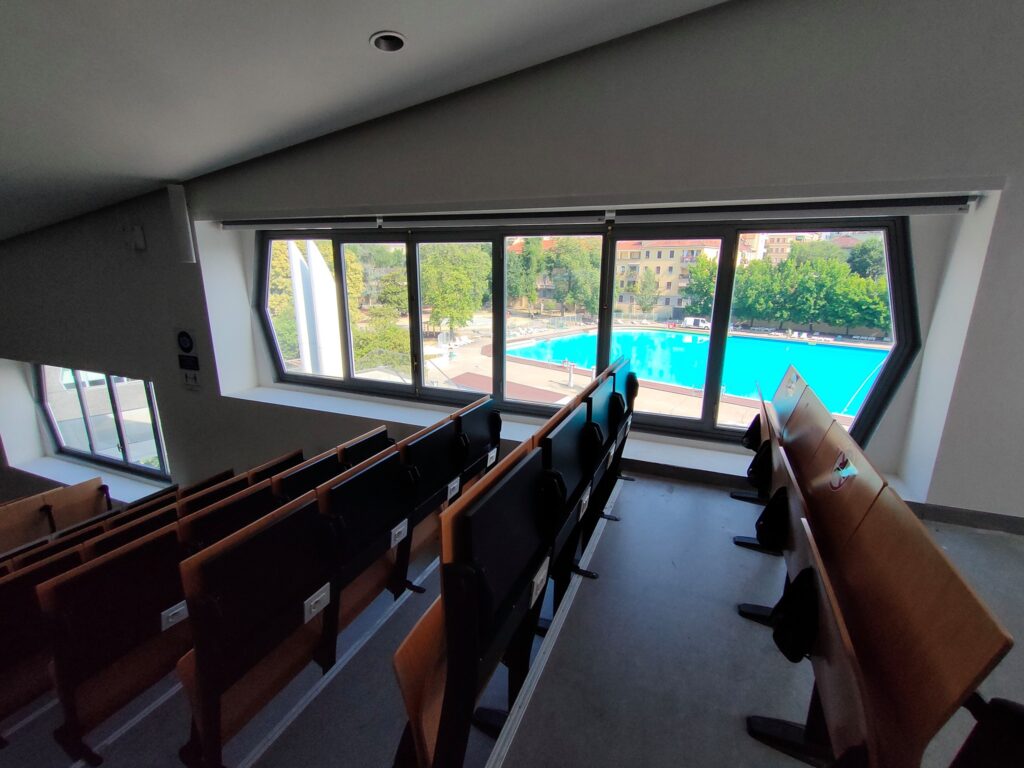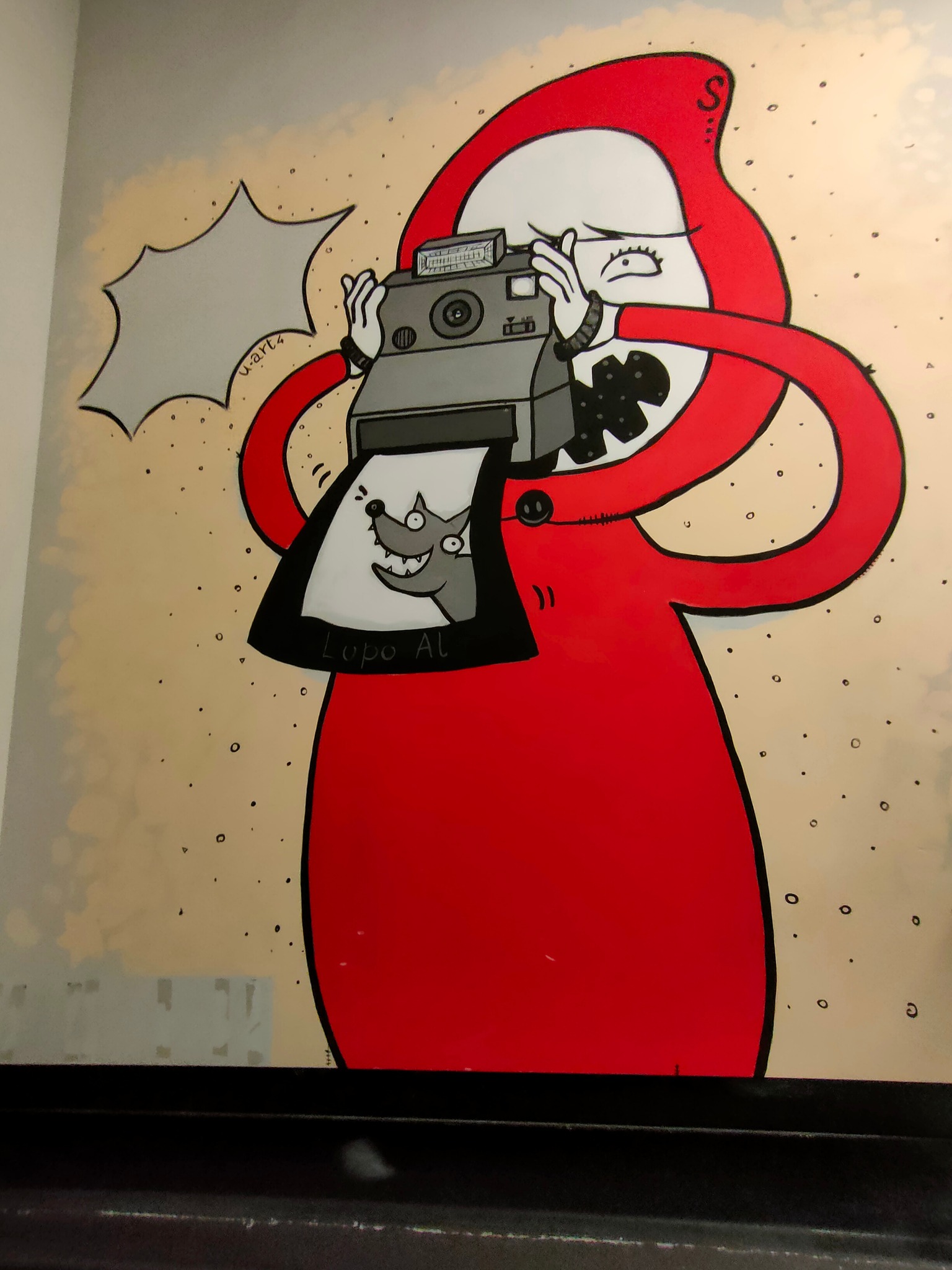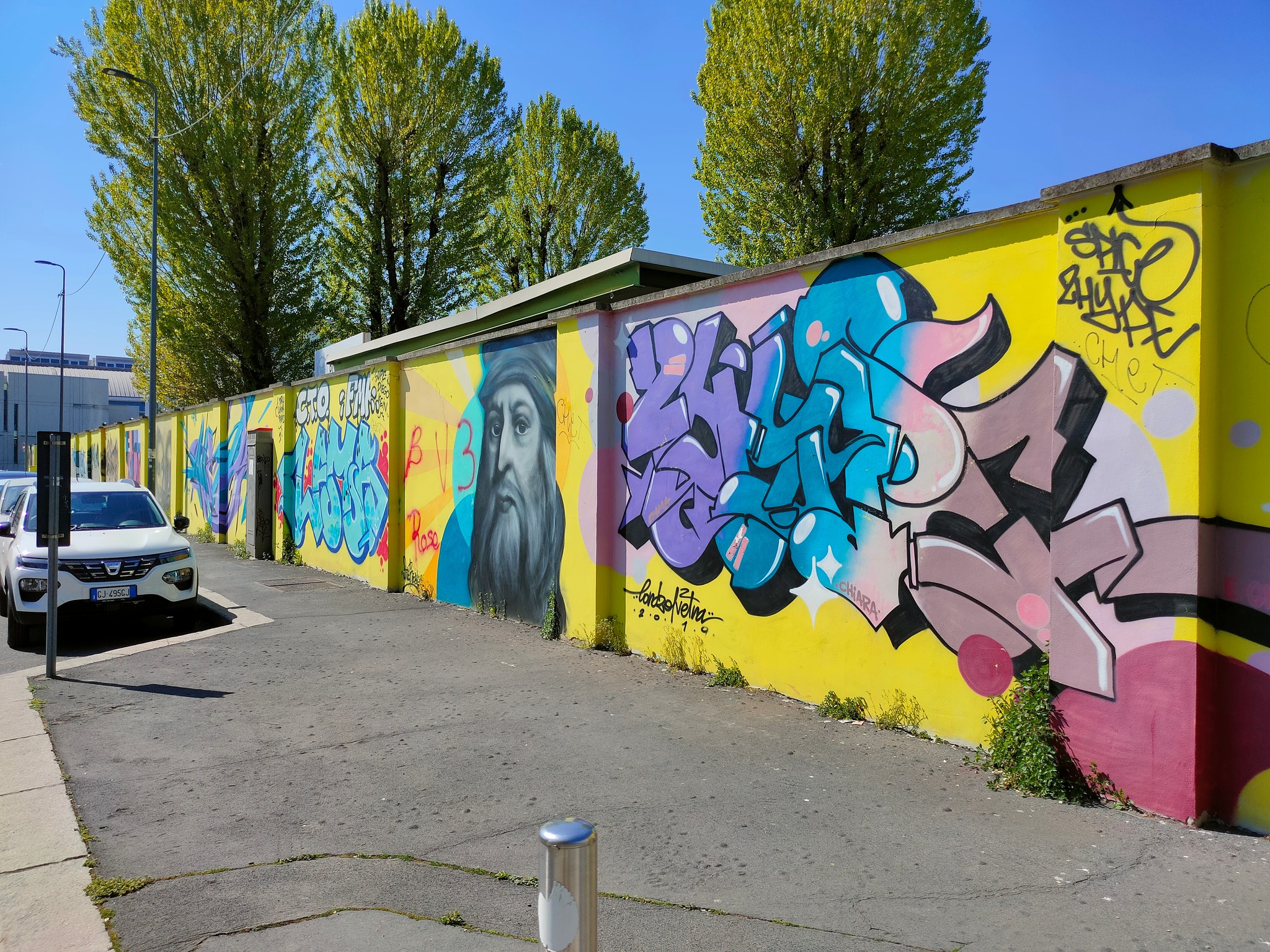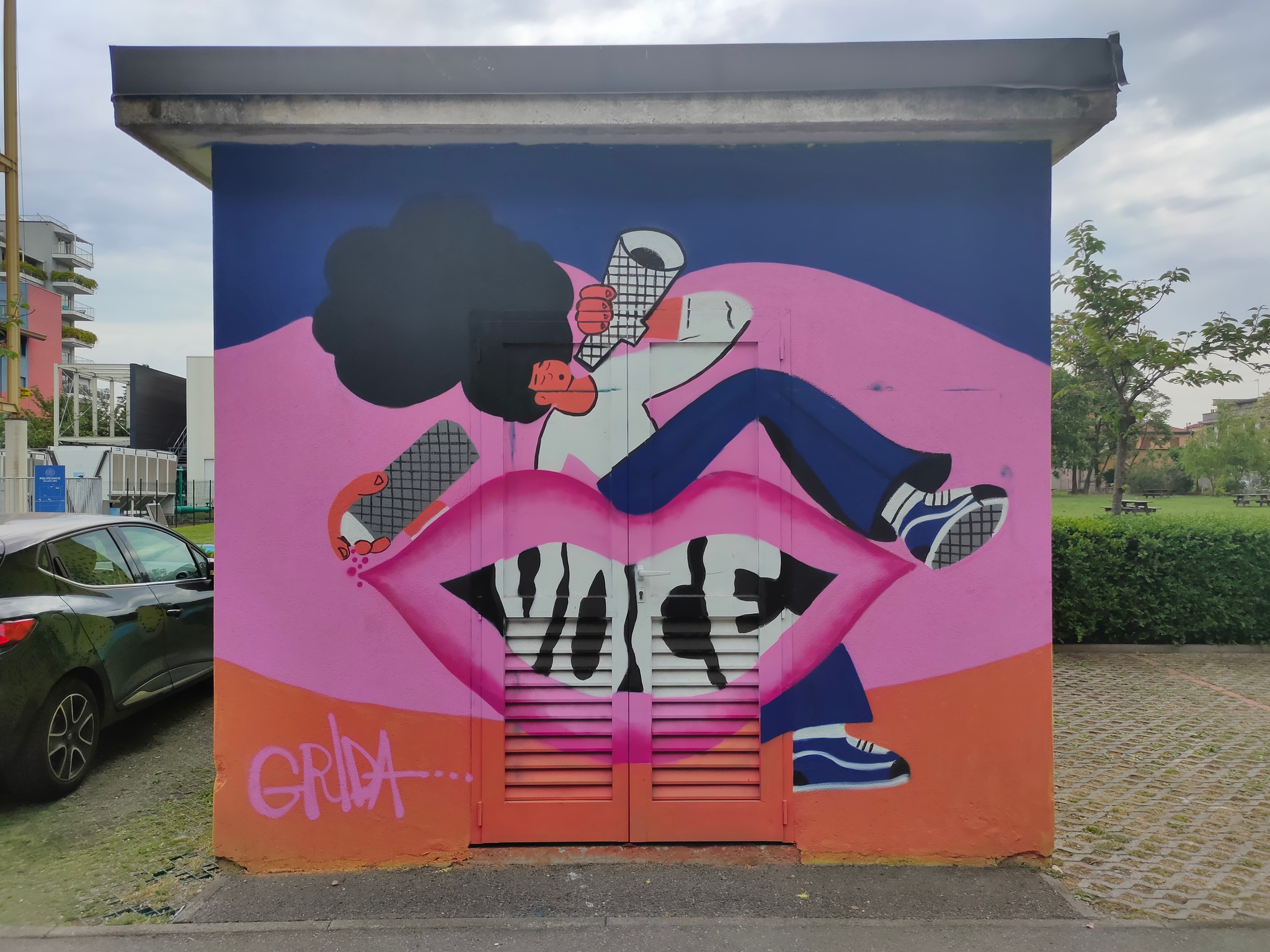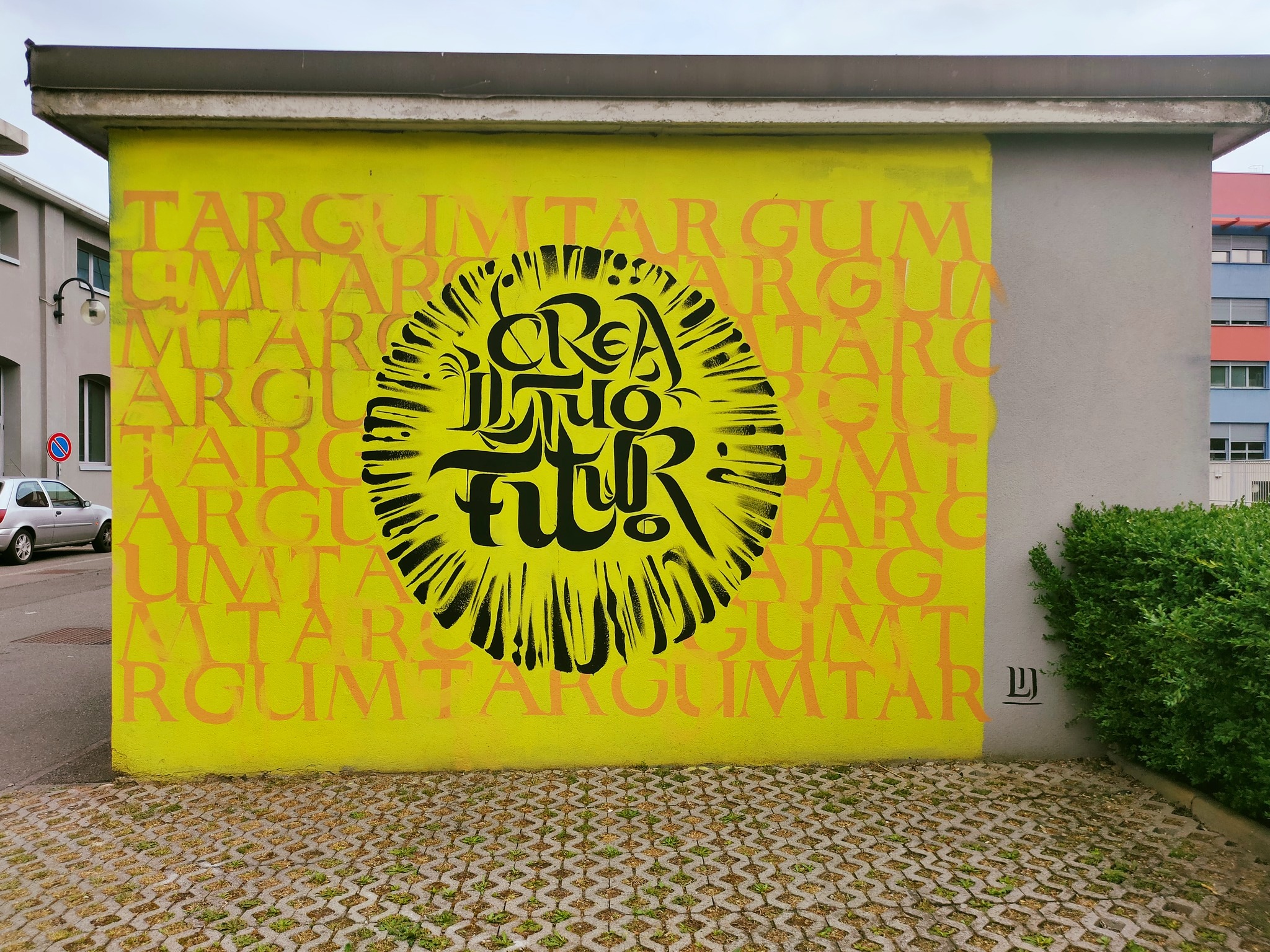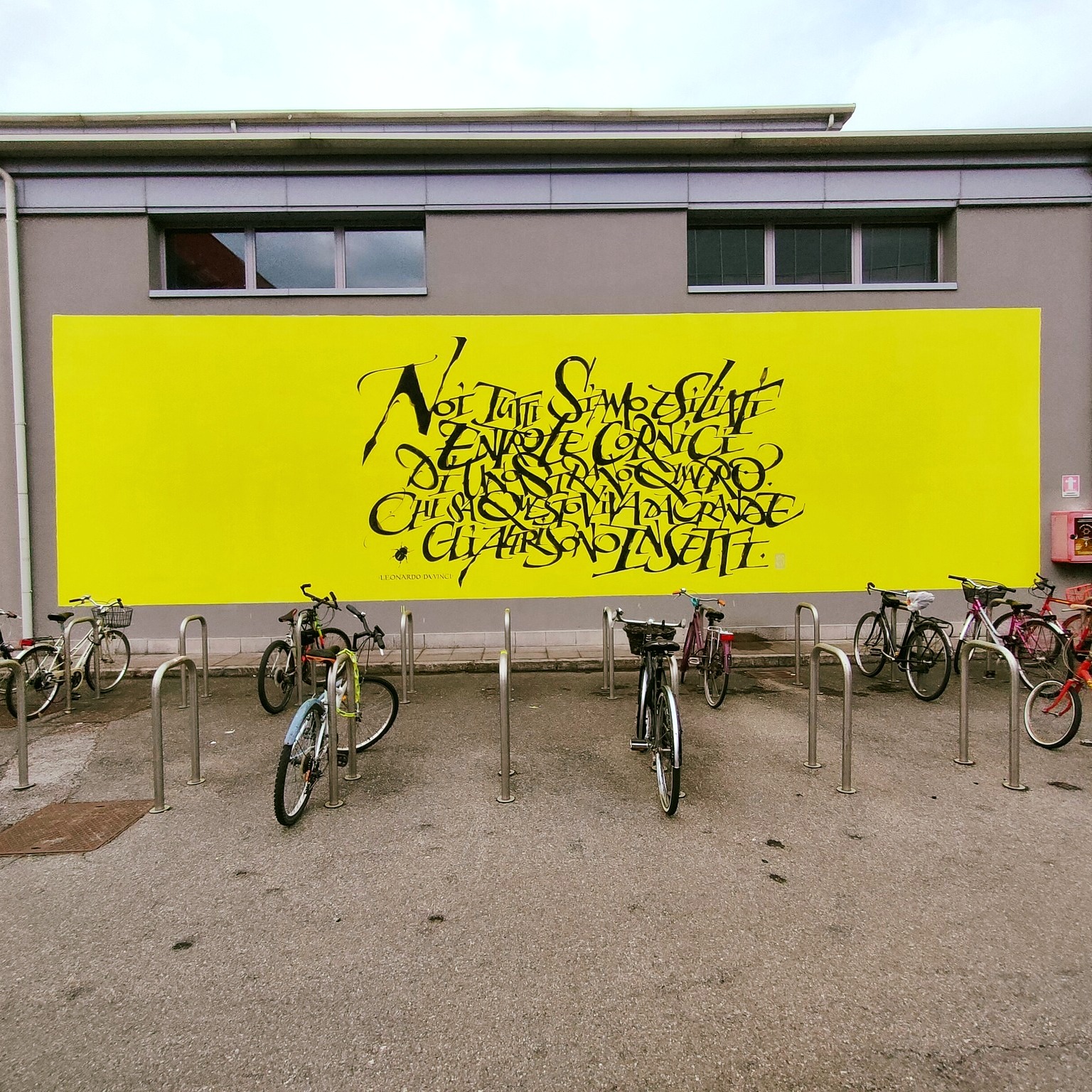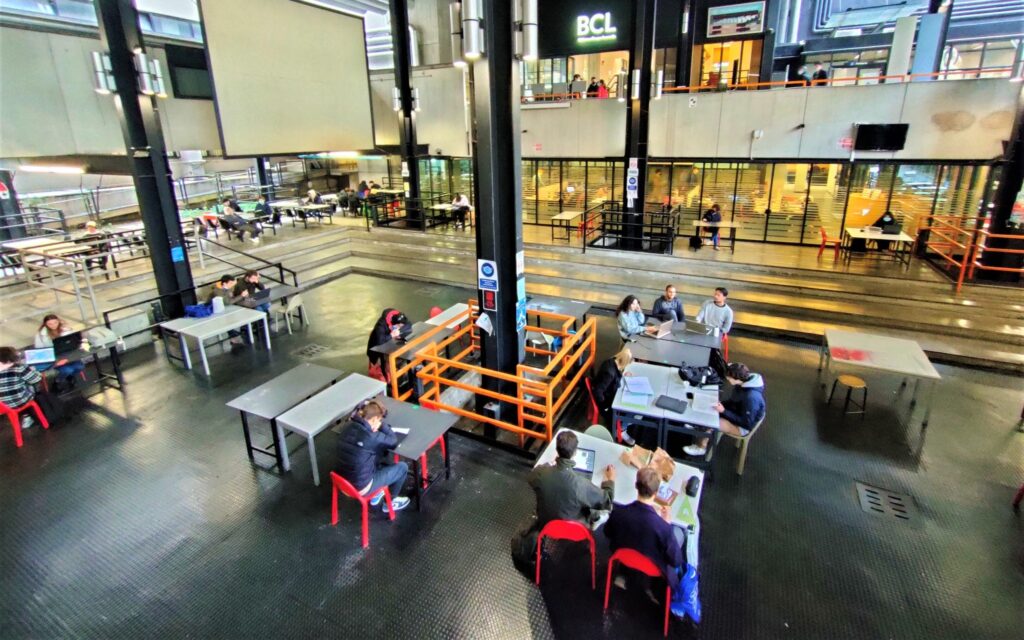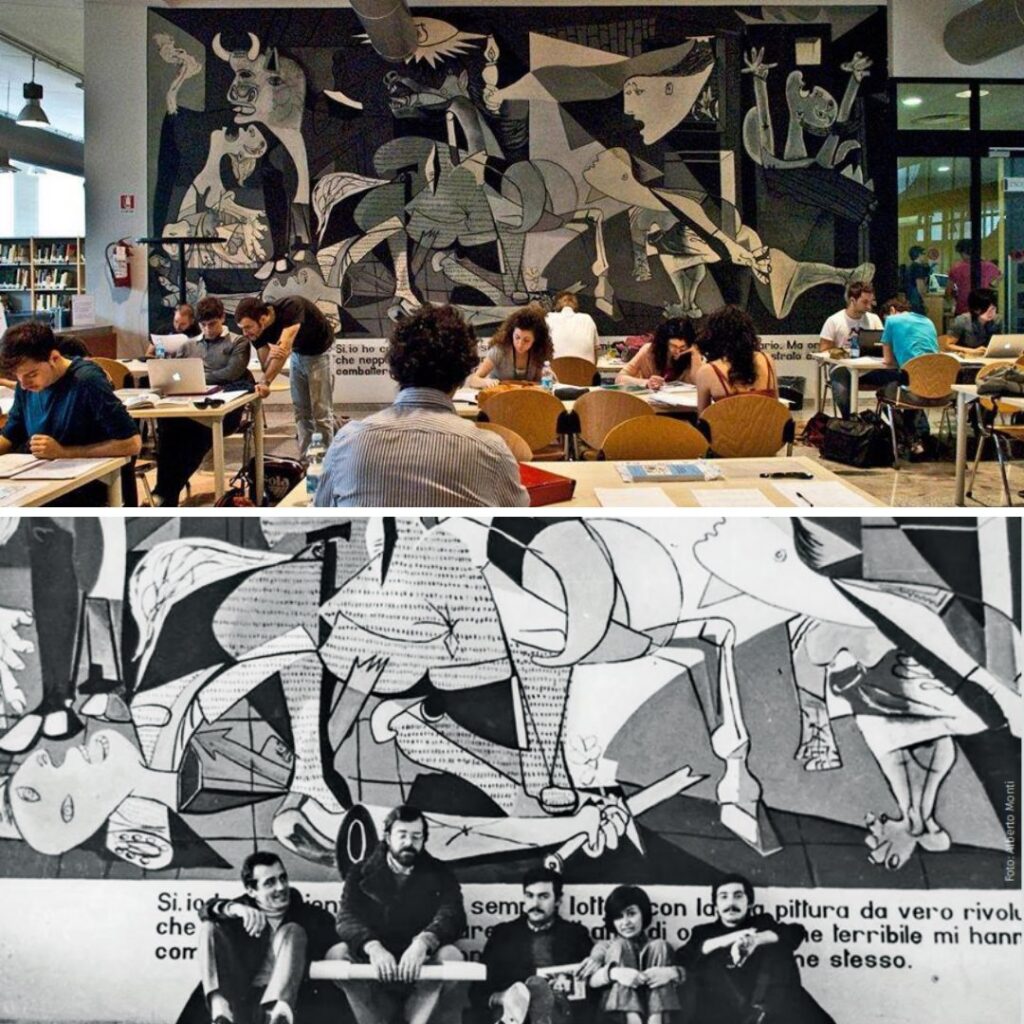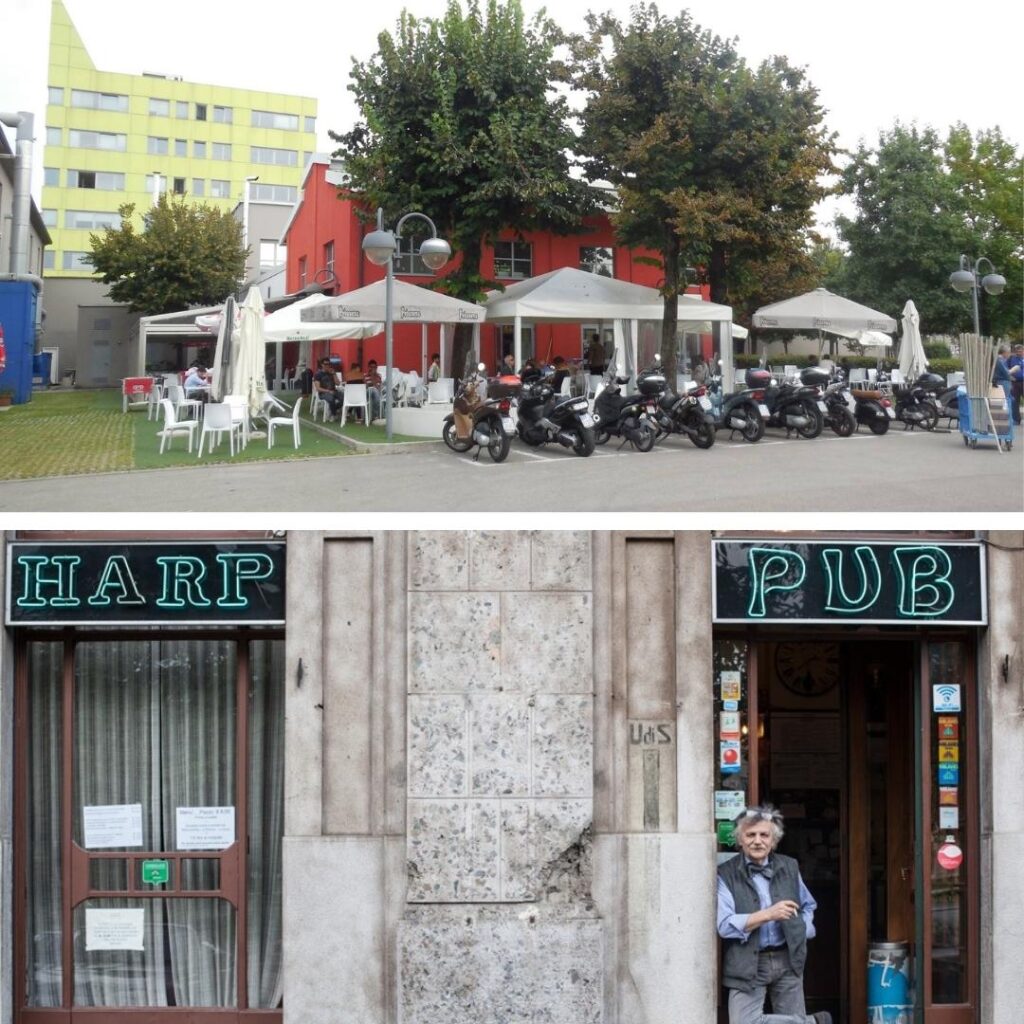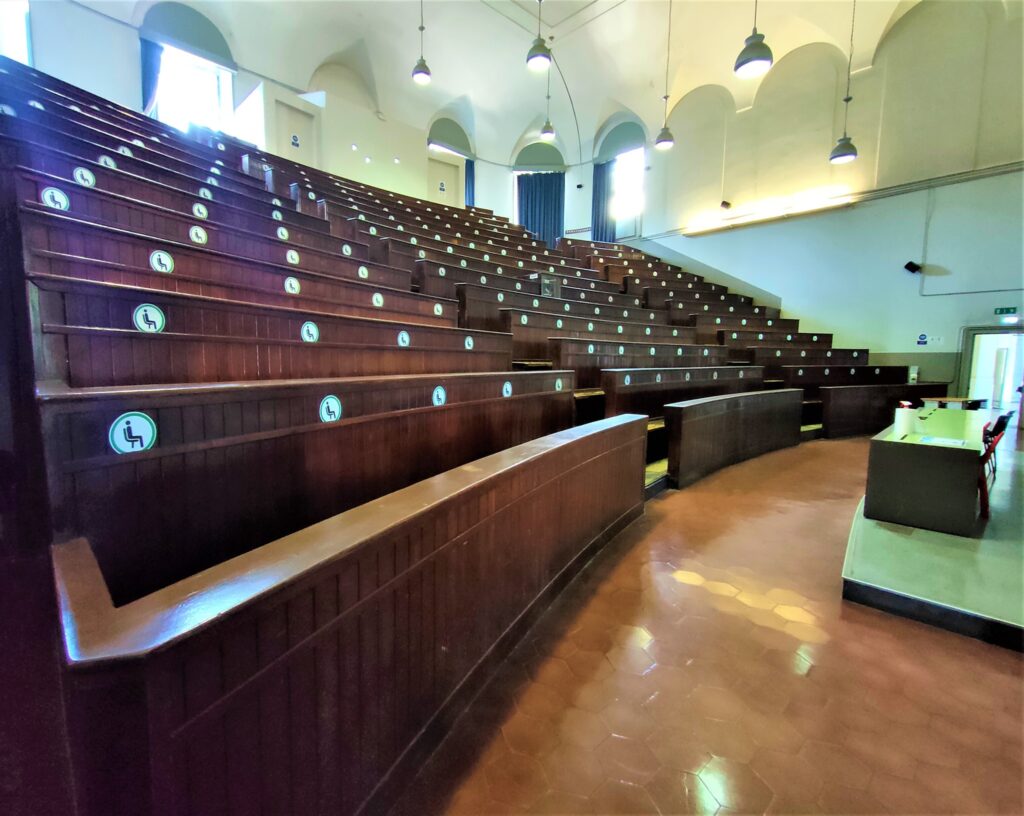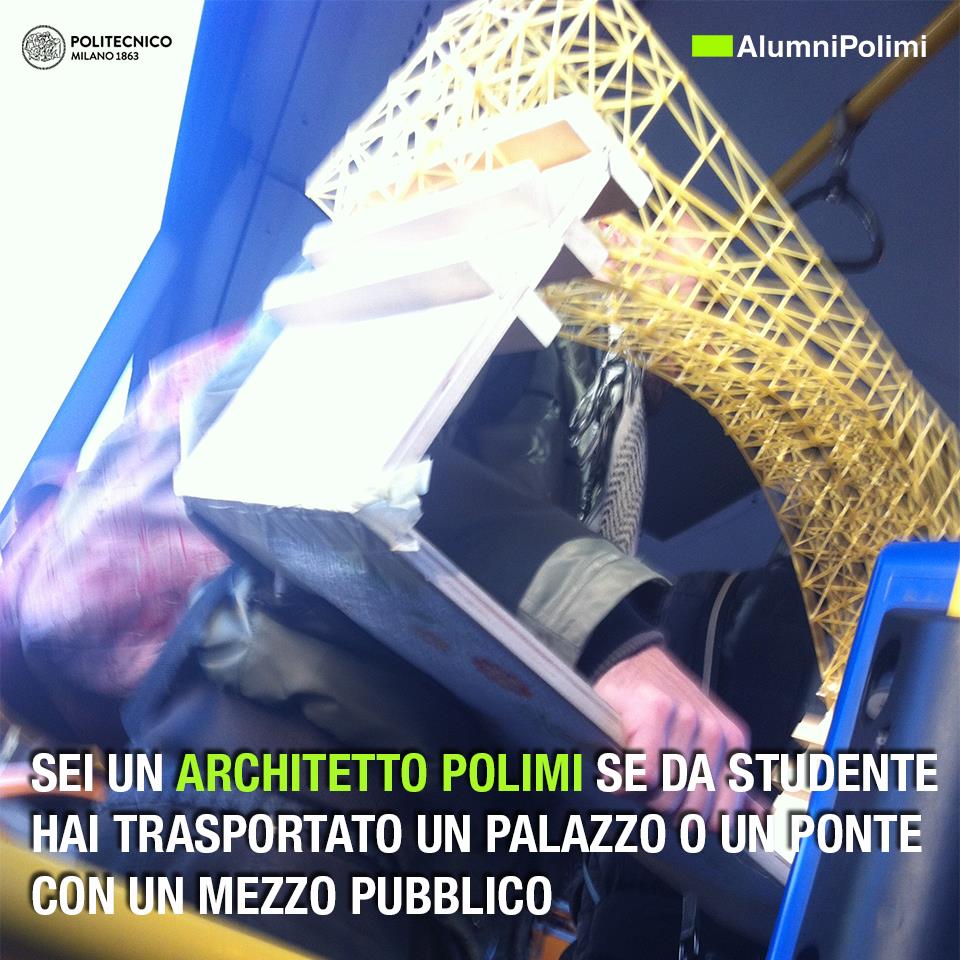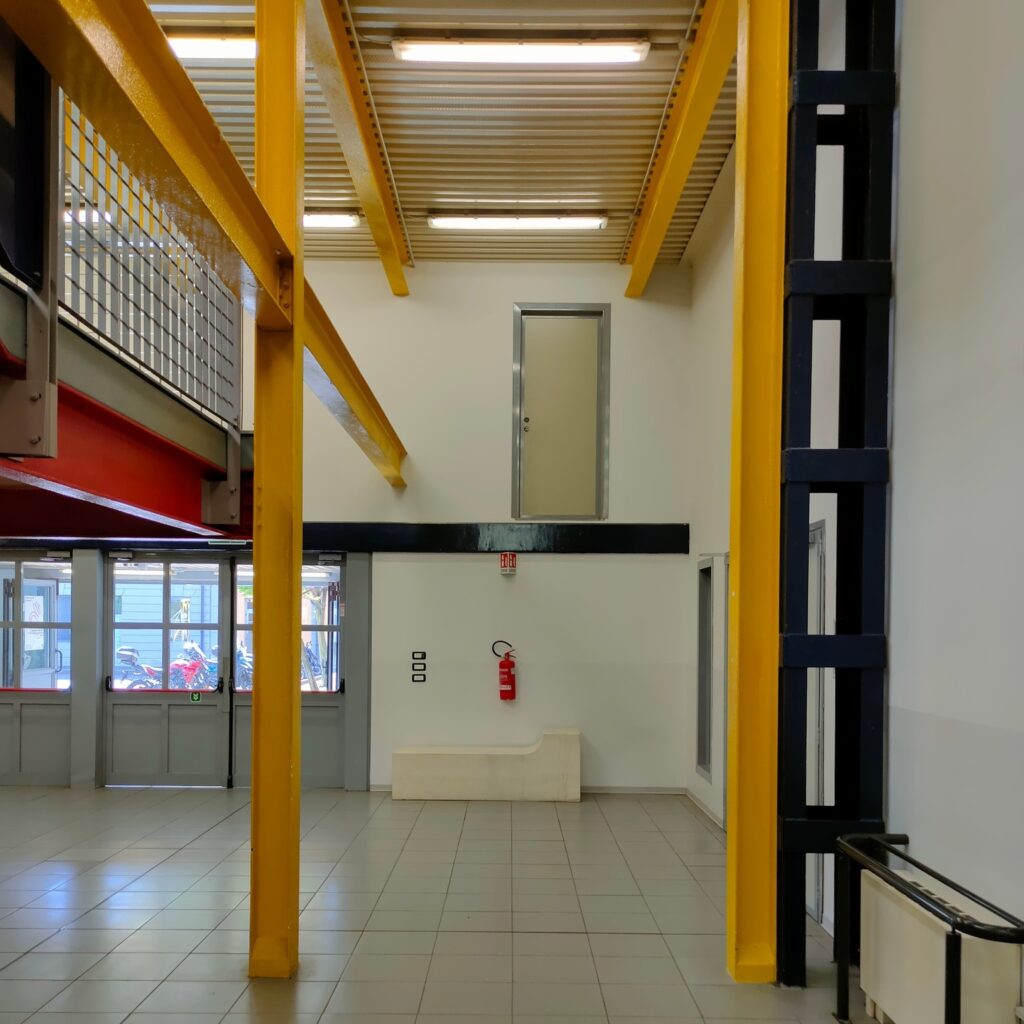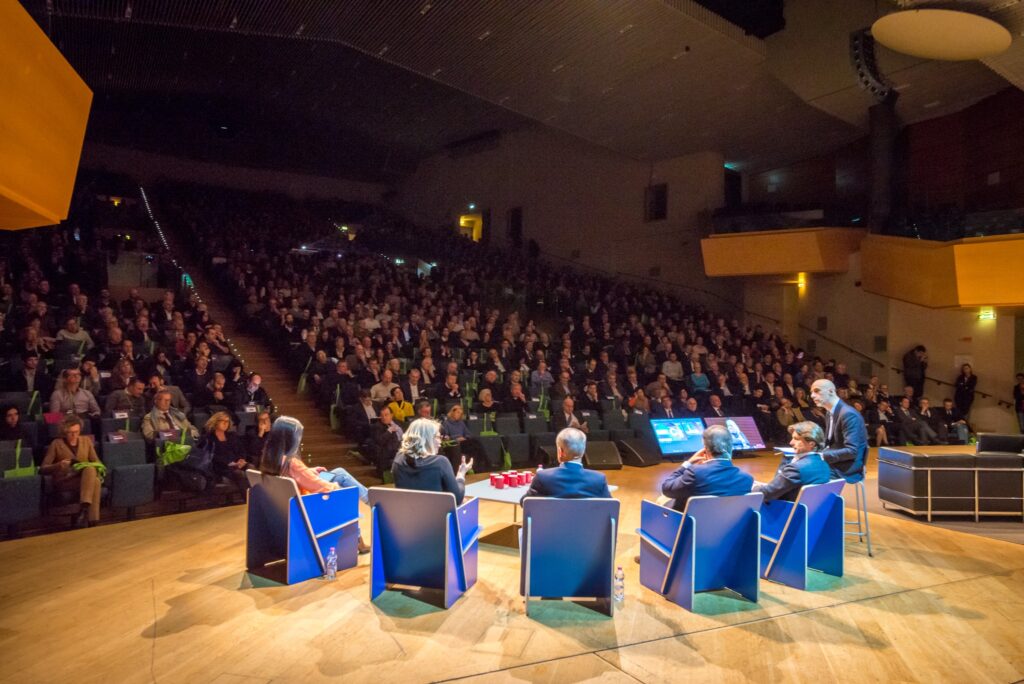Research and technological transfer can contribute to the leveraging of sports to achieve greater inclusion of vulnerable individuals. In this regard, in 2019 the Politecnico invested € 580 thousand in research projects with a high social impact, to be implemented in the sports world. To tackle the issues of youth disenfranchisement and the exclusion of minorities, encourage dialogue between cultures, and promote the social and environmental improvement of neighbourhoods, particular attention was paid to facilitating access to sports for disabled people – an important objective for public policies at the global level – and to the inclusion of marginalised sectors in general: in the suburbs and inner cities, in the prisons, and in areas affected by depopulation.
REGENERATING A CITY’S PUBLIC SPACE | UNPark Urban Nudging Park
Departments: DASTU, DCMC, DABC, DESIGN, DEIB
Tags: street sport, marginal urban spaces, socialisation
Location: Milano (town hall 8)
Partners: Municipality of Milan, Open4Citizens,
Assicurazioni Vittoria, Radio Popolare,
ESO, LSS Bottoni and ICS R. Pizzigoni schools, Comitato di cittadini Milano in Alta Quota, OSG2001 and Soulbasket sports associations, ARCI L’Impegno and the Associations of Catholic Guides and Scouts of Italy.

With the UNParkproject, researchers started with a feasibility study of medium-long term scenarios and developed a pilot action focussed on the area below the Serra-Monte Ceneri Flyover in Milan. Built at the start of the 1960s to lighten the traffic coming into Fiera Campionaria, over time the flyover has become an increasingly critical issue for the neighbourhood. Researchers have reimagined it being transformed into a multifunctional and accessible space devoted mainly to the most vulnerable urban categories (pre-teens, teens and the elderly): a playground equipped for street sport and other social activities, enlivened by a schedule of sporting and cultural activities open to the public.
VISITING THE MOUNTAINS IS A WALK IN THE PARK | TWIN Trekking, Walking and cycling for Inclusion
Departments: DASTU, DICA, DEIB
Tags: slow leisure, new jobs, building restoration
Location: LIGURIAN AND TUSCAN-EMILIAN APPENNINES
Partners: CAI - Italian Alpine Club, FCI - Italian Cycling Federation (National Federation and Milan Provincial Committee), European Association of the Via Francigena and Consorzio Solidarietà Sociale Oscar Romero.
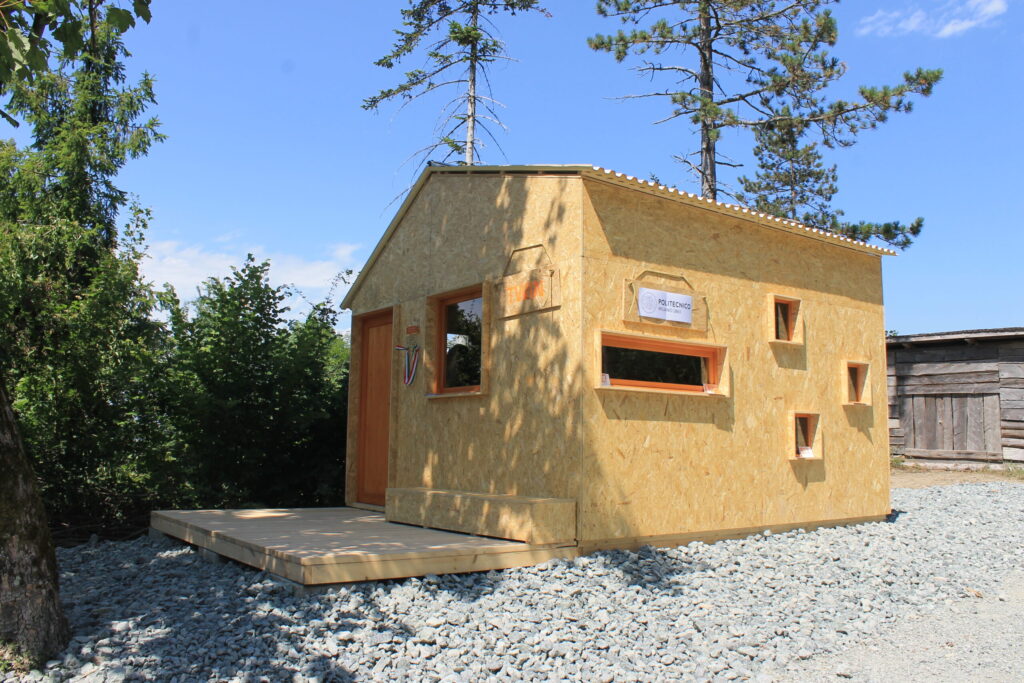
Travelling sports tourism along cycle lanes and pathways is an opportunity for the economic and social regeneration of rural areas of the interior. These networks of pathways need primary services (food, accommodation, sanitary facilities) and accessory services (products, assistance, safety, training, etc.) which have almost no access for disabled people and are managed intermittently by means of local initiative. This is the context of the TWIN project, a study to propose the building of one or several reception facilities in the Central Italy seismic crater area, which will be operated by “vulnerable” individuals, primarily workers from with the sector who possess experience and skills but have lost their job (or clientele) following the earthquake, but also disabled people and ex-convicts. The first TWIN hut was inaugurated on 31 July 2021 at the Cisa Pass having been built in the workshop at Monza prison to welcome pilgrims and hikers.
Discover more: Slow tourism made in Politecnico: the TWIN hut project
Find the Twin Hut https://www.twin.polimi.it/capanna-twin/
QUARTIERE CHE VAI, CAMPETTO CHE TROVI | SPèS SPORT è SOCIETÀ
Departments: DAC, DIG, DASTU
Tags: parish youth clubs, sports infrastructure, social regeneration
Location: METROPOLITAN CITY OF MILAN
Partners: ICS - Italian Institute for Sports Credit, Lombardy Regional Committee of the Italian National Olympic Committee (CONI), Lombardy General Directorate for Welfare, Municipality of Milan, CSI Milan Sports Promotion Authority, Fondazione diocesana per gli Oratori Milanesi (FOM).
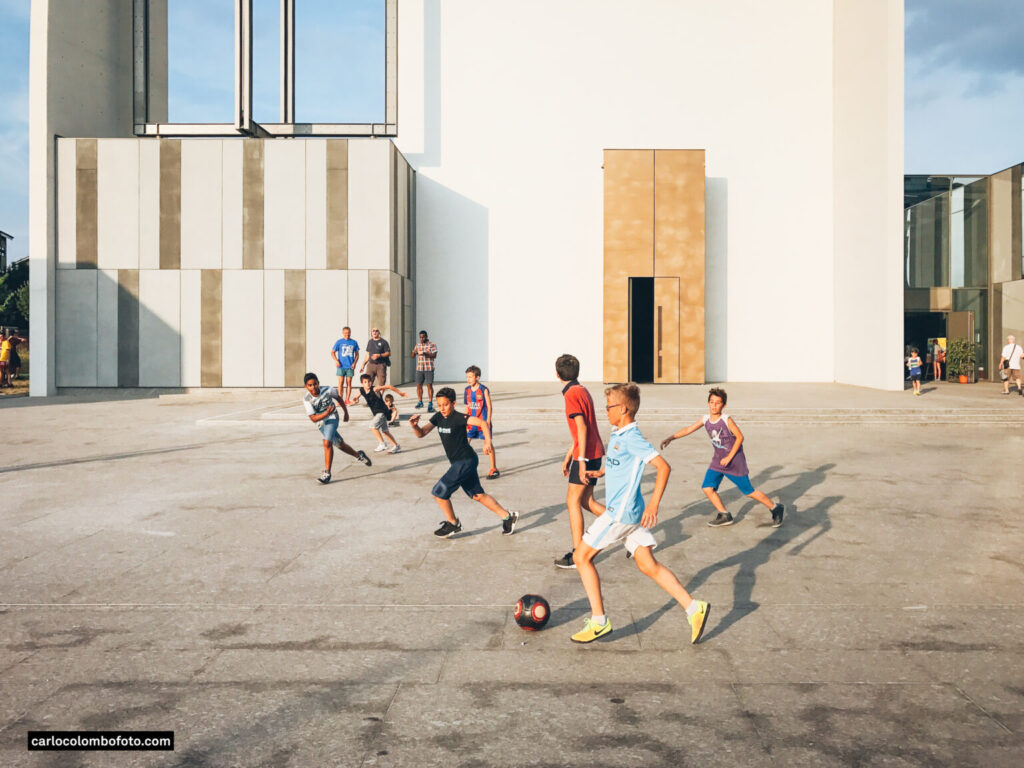
A project for social regeneration and the promotion of health and urban inclusion through the reactivation of the sports infrastructure system belonging to the parish youth clubs of Milan.
In an initial analysis phase, the distribution of the numerous parish youth clubs throughout the area was mapped, and the correlation between them and sports spaces, social infrastructure and urban green spaces was studied. A further study took account of the demographic element and accessibility on the city-wide scale through georeferenced maps, showing the role of parishes as places for local services, central for developing a human-oriented city. Following the study, the project focussed on the definition of a Strategic Design Framework which will make it possible to suggest social regeneration strategies, with particular reference to the sports sector, based precisely on these facilities.
PROTESI E ORTESI PER PICCOLI SPORTIVI | GIFT enGIneering For sporT for all
Departments: DEIB, DIG, DMEC, DESIGN, DICA, DCMC
Tags: orthotics, physical education, Sport for All
Location: LOMBARDY AND LAZIO
Partners: IRCCS Eugenio, Medea – Associazione la Nostra Famiglia, Università Cattolica di Milano, the Edumoto Yuky ONLUS, Polha Varese and Polisportiva Milanese 1979 Sport Disabili Onlus associations, and the organisations ITOP, BTS and Math&Sport. The project also benefits from collaboration from Claudio Arrigoni, a journalist from the sports daily paper Gazzetta dello Sport.
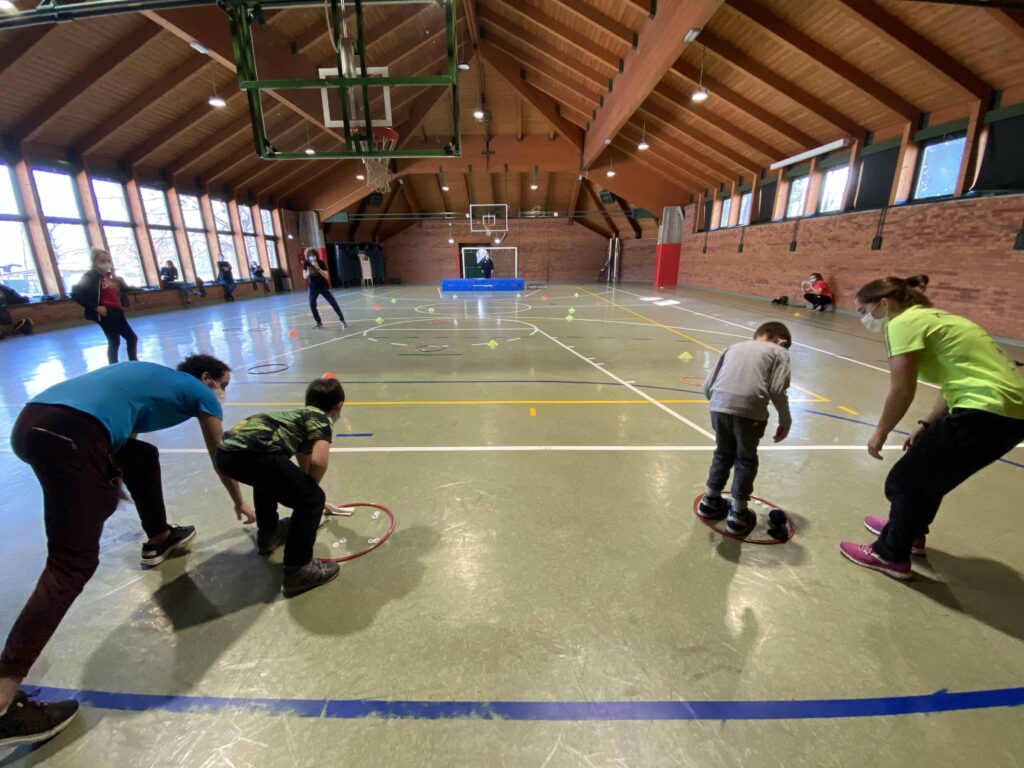
Headed by the E4Sport Lab, one of the Politecnico di Milano’s interdepartmental laboratories, the GIFT project covered two areas of research. The technological part led to the development of innovative orthoses which, by correcting functional deficits in hemiplegic children, can allow them to take part in sports (specifically, tests were conducted on running).
On the social front, the research involved families, primary school teachers and sports associations through questionnaires, interviews, focus groups and special events.
Discover more: The Politecnico di Milano wins the European prize for social inclusion in sport
THE ECONOMIC AND SOCIAL IMPACT OF THE OLYMPICS | FIVE of Olympics’ FLAG Framework for Impact eValuation of the Effects of Olympics For Longterm Achievement of (common)Good
Departments: DIG, DENG, DASTU
Tags: Winter Olympics, Strategic Planning, Social Cohesion
Location: MILAN AND ALPINE AREAS OF LOMBARDY, TRENTINO-ALTO ADIGE AND VENETO
Partners: Municipality of Milan (Urban Economy and Employment Department), Metropolitan City of Milan, in the person of the Deputy Mayor Arianna Censi, and OMERO - Interdepartmental Research Centre for Urban Studies and Events.

What long-term impact will the 2026 Milan-Cortina Winter Olympics have on the local area? What will they bring in social, environmental and economic?
These are the questions being asked by researchers from the Politecnico di Milano’s Tiresia group with their “Five of Olympics FLAG” project, as they work with local communities to analyse scenarios on several fronts: from the road network (above all the opening of theForcola Passin winter) to underground parking, from the possible saturation of local hospitality and healthcare facilities.
SPORT E RICERCA IN CARCERE | ACTS A Chance Through Sport
Departments: DASTU, DESIGN, DEIB
Tag: detenuti, educazione motoria, riabilitazione sociale
Location: METROPOLITAN CITY OF MILAN
Partners: Regional Department of Prison Administration, National Guarantor for the Rights of Persons Detained or Deprived of Liberty, Elite, Bikevo, PARCfor, Waterproofing, Mapei S.p.A., Swan&Koi

“I want to leave a better person”, says Filippo, an inmate in Bollate prison (the name is made up). TheACTS projectnvolved a group of students and researchers from the Politecnico listened to this desire and visited the Opera and Bollate prisons and the “Beccaria” Juvenile Detention Facility. The group works on the spaces and strategies of communication to build and facilitate relationships among inmates, prison officers and management, and on monitoring the physical condition of inmates and officers using wearable devices. A project that promotes sport as no longer a merely occasional practice, but as a relational and socialisation tool for effectively improving the physical and mental wellbeing of individuals and for upgrading spaces.
CLIMBING SHOWS YOU THE WORLD FROM ANOTHER PERSPECTIVE | ACCEPT Adaptive Climbing for CErebral Palsy Training
Departments: DEIB, DMEC, DESIGN
Tags: disability, adapted climbing, rehabilitation
Location: Milan
Partners: the FightTheStroke foundation as principal partner, the Milanoarrampicata association, the Playmore social enterprise and FASI - Italian Rock Climbing Federation (A. Biggi, trainer), RGTECH, Vibram, Scarpa and Montura
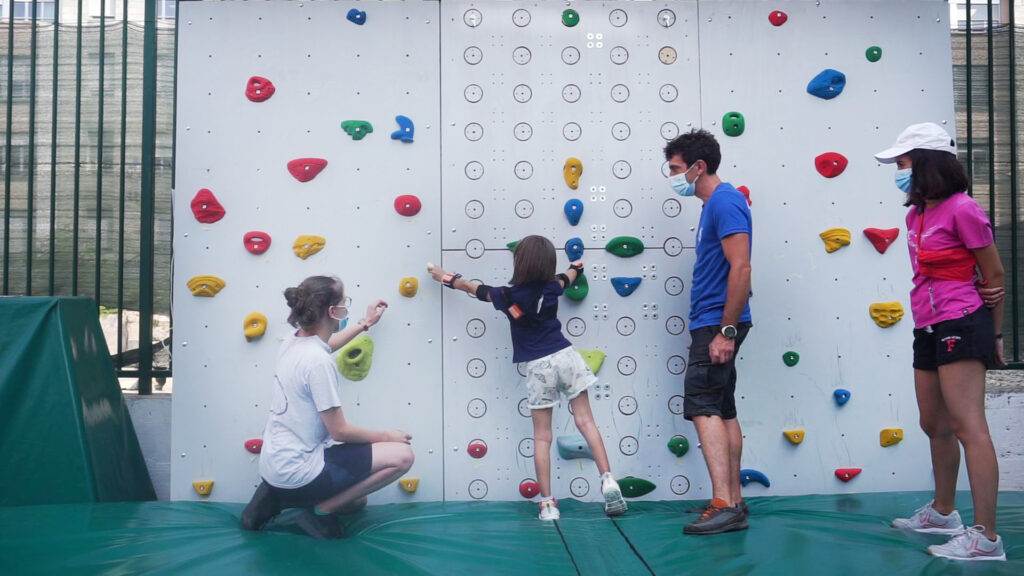
Cerebral palsy (CP) is the most common infant motor neurone disability. In many cases, children with CP can recover part of their motor neurone ability with intense rehabilitation work, and sport can help this process and contribute to the achievement of functional objectives that would otherwise have taken longer to attain. The ACCEPT project focusses on climbing, in partnership with the FightTheStroke foundation: the result is an adapted interactive wall, fitted with sensors and optimised to meet the rehabilitation needs of children affected by CP between 6 and 13 years old (and children with motor problems more generally).
Discover more: ACCEPT, the inclusive climbing wall at Fight Camp
